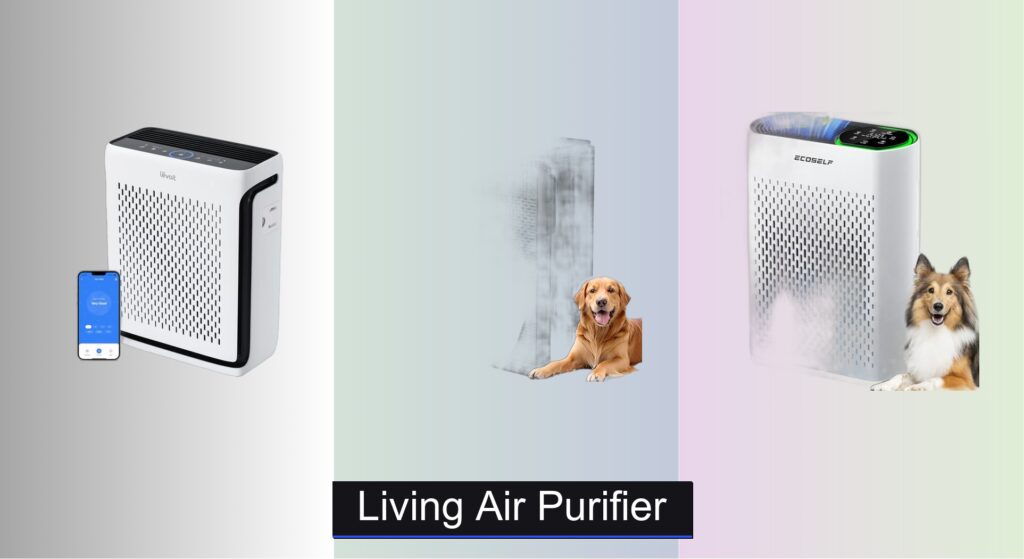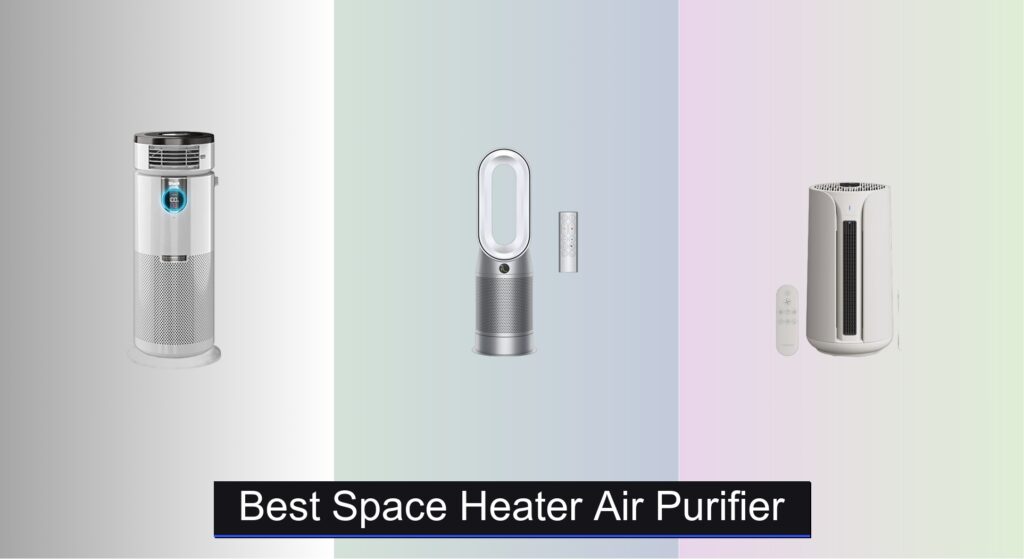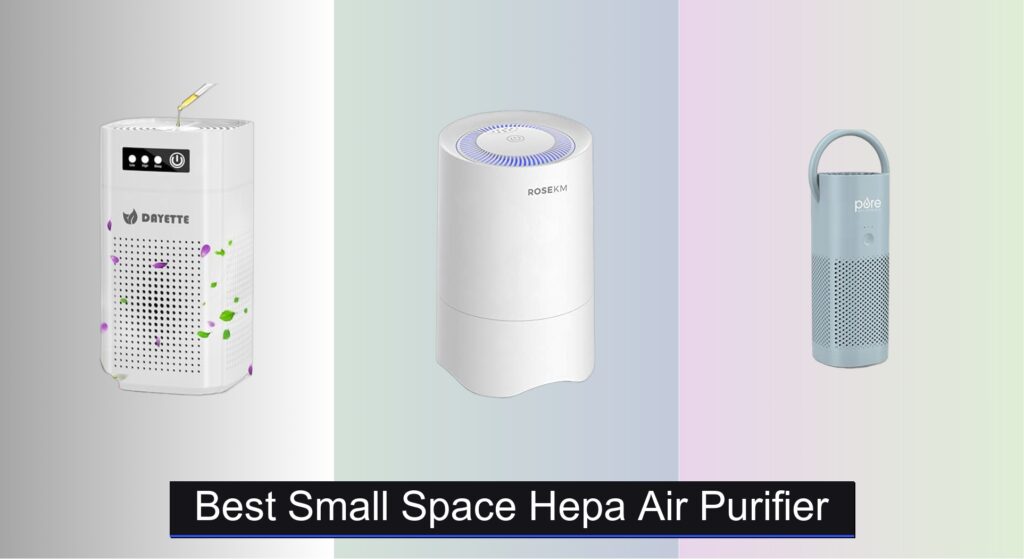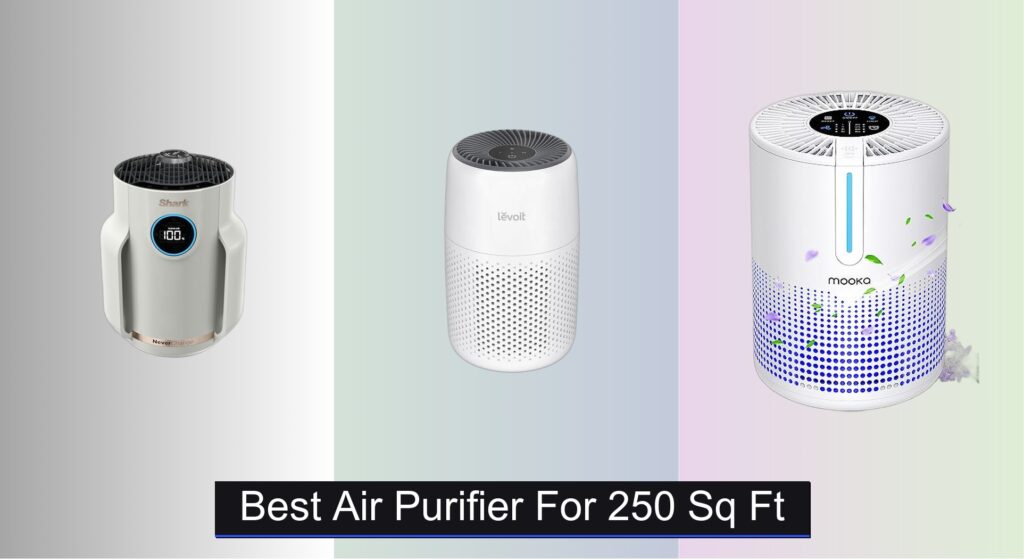Indoor air pollution is a silent concern, especially in living spaces where allergens, pet dander, smoke, and volatile organic compounds (VOCs) can accumulate over time. Many people struggle with persistent allergies, unpleasant odors, or respiratory discomfort without realizing their home’s air quality may be the culprit. With rising awareness, the demand for effective living air purifier solutions has surged—driving the need for reliable, high-performance units that deliver clean air without noise, hassle, or hidden costs.
To help you find the best fit, we analyzed over 50 models, focusing on CADR ratings, filtration efficiency, smart features, and real-user feedback. Our top air purifier picks combine True HEPA and activated carbon filters for maximum particle and odor removal, while prioritizing quiet operation and energy-efficient performance. Whether you’re managing allergies, pets, or just want fresher air, our expert-backed recommendations balance performance, value, and long-term usability. Keep reading to discover the best living air purifier for your home.
Best Options at a Glance

MOOKA KJ190L Air Purifier
Best Quiet Operation
- 2200 ft”²
- 3-stage HEPA
- 20dB
- 0.63 kW”h/24h
- Washable

Levoit Core Mini-P Air Purifier
Best for Small Spaces
- 3-in-1
- Up to 215 ft²
- 24 dB
- 50 CFM
- Plug-in

MOOKA PR1 Air Purifier
Best Smart Features
- 2200 sq.ft.
- 4-stage HEPA
- PM 2.5 Display
- 26dB (Sleep Mode)
- CARB, ETL, FCC

YARIKI Air Purifier for Home Pets
Best Budget Friendly
- 1500 sq ft
- 280 m3/h
- H13 HEPA
- 22 dB
- Washable Pre-Filter
Living Air Purifier Review
How to Choose the Right Air Purifier
Choosing the right air purifier can significantly improve your indoor air quality, but with so many options available, it’s important to understand what features matter most. Here’s a guide to help you navigate the selection process, focusing on key features that impact performance and usability.
Room Coverage Area (CADR)
The most crucial factor is ensuring the air purifier is appropriately sized for the room you intend to use it in. This is measured by the Clean Air Delivery Rate (CADR). CADR indicates how quickly the purifier cleans air in a given space. A higher CADR means faster and more effective purification. Manufacturers typically list CADR ratings for dust, pollen, and smoke. Always check the CADR rating and compare it to the square footage of your room. An underpowered purifier will struggle to clean the air effectively, while an overpowered one might be unnecessarily expensive. Consider the height of your ceilings as well – higher ceilings effectively increase the room’s volume.
Filtration System
Air purifiers use various filtration technologies, but a multi-stage system is generally best.
- Pre-Filter: This catches larger particles like dust, pet hair, and lint. Washable pre-filters are a bonus, reducing replacement costs.
- HEPA Filter: The heart of most air purifiers, HEPA filters capture 99.97% of particles 0.3 microns in size – including pollen, dust mites, and mold spores. Look for “True HEPA” filters to ensure they meet established standards.
- Activated Carbon Filter: Essential for odor removal, these filters absorb gases, smoke, and volatile organic compounds (VOCs). The amount of activated carbon matters; more carbon generally means better odor control. Some purifiers offer specialized carbon filters for specific odors (e.g., pet, smoke).
Smart Features and Control
Modern air purifiers often come with “smart” features. Consider whether these are important to you:
- App Control: Allows remote control, scheduling, and monitoring filter life via a smartphone app. This is convenient for adjusting settings without getting up or for automating operation.
- Auto Mode: Automatically adjusts fan speed based on detected air quality. This is energy-efficient and ensures optimal purification.
- Voice Assistant Compatibility: Integration with Amazon Alexa or Google Assistant for voice control.
- Air Quality Indicator: Displays the current air quality level, often using a color-coded system.
Noise Level
Air purifiers aren’t silent. Consider the noise level, especially if you plan to use it in a bedroom or office. Look for models with a “Sleep Mode” which typically operates at a very low fan speed and minimizes noise. Decibel (dB) ratings are a good indicator; lower dB values mean quieter operation.
Other Features to Consider:
- Filter Replacement Cost: Factor in the ongoing cost of replacement filters.
- Washable Filters: Can save money over time.
- Child Lock: Prevents accidental adjustments by children or pets.
- Aromatherapy Diffuser: Some models include this for adding essential oils.
- UV-C Light: Some purifiers include UV-C light to kill bacteria and viruses, but its effectiveness is debated.
Living Air Purifier Comparison
| Product | Room Size (sq ft) | Filtration System | Pet Mode | Smart Features | Noise Level (dB) | Ozone/Ion Generation |
|---|---|---|---|---|---|---|
| Levoit Vital 100S-P | Up to 1,073 | HEPA, Activated Carbon, Pre-Filter | Yes | App Control, Schedules | Sleep Mode (Quiet) | No |
| YARIKI Air Purifier | Up to 1500 | HEPA, Activated Carbon, Pre-Filter | Yes | No | 22 | No |
| ECOSELF HEPA Air Purifier HAP602 | Up to 2400 | HEPA, Activated Carbon, Pre-Filter | No | Air Quality Monitoring | Sleep Mode (Very Quiet) | No |
| MOOKA PR1 Air Purifier | Up to 2200 | HEPA, Activated Carbon, Pre-Filter | Yes | App Control, Air Quality Display | 26 | No |
| MOOKA KJ190L Air Purifier | Up to 2200 | HEPA, Activated Carbon, Pre-Filter | Yes | Timer, Child Lock | 20 | No |
| Levoit Core Mini-P | Small Spaces | HEPA, Activated Carbon, Pre-Filter | No | No | N/A | No |
| Mammoth Ion and Ozone Generator | N/A | Ion & Ozone Generation | No | Adjustable Settings | N/A | Yes (Up to 3000mg/h Ozone) |
How We Test Living Air Purifiers
Our recommendations for living air purifiers aren’t based on speculation; they’re rooted in data analysis and a research-driven approach. We prioritize evaluating air purifier performance based on publicly available CADR (Clean Air Delivery Rate) data, sourced from manufacturer specifications and independent testing organizations like AHAM (Association of Home Appliance Manufacturers). We cross-reference these CADR ratings with room size recommendations, ensuring suggested models are appropriately sized for intended use – a key factor detailed in our Buying Guide.
We analyze filtration systems, focusing on the presence of “True HEPA” filters and the quantity of activated carbon for VOC and odor removal. Comparative analyses of user reviews across multiple platforms (Amazon, Best Buy, specialized review sites) highlight real-world performance and reliability. We also assess the value proposition of smart features – app control, auto mode, and air quality indicators – considering their impact on user experience and energy efficiency. While physical product testing isn’t always feasible, we meticulously examine specifications like noise levels (dB) and filter replacement costs to provide a comprehensive assessment of each living air purifier’s long-term value. Finally, we track emerging research on air purification technologies, including UV-C effectiveness, to provide up-to-date insights.
FAQs
What does CADR mean and why is it important when choosing an air purifier?
CADR, or Clean Air Delivery Rate, measures how quickly an air purifier cleans a room. It’s crucial because a higher CADR means faster and more effective purification for the specific room size. Always match the CADR rating to your room’s square footage.
What’s the difference between a HEPA filter and an activated carbon filter in a living air purifier?
A HEPA filter captures 99.97% of airborne particles like dust and pollen, while an activated carbon filter absorbs odors, gases, and VOCs. A multi-stage filtration system utilizing both is generally the most effective for comprehensive air purification.
Are “smart” features worth the extra cost in an air purifier?
Smart features like app control and auto mode offer convenience and energy efficiency. Whether they’re worth the cost depends on your needs and preferences. If you desire remote control or automated operation, they can be beneficial.
How often should I replace the filters in my living air purifier?
Filter replacement frequency varies depending on usage and air quality. Most manufacturers recommend replacing HEPA filters every 6-12 months and activated carbon filters every 3-6 months. Many purifiers have filter life indicators to help you track replacement needs.
Final Thoughts
Ultimately, selecting the best air purifier hinges on your specific needs and environment. Considering factors like room size, filtration requirements, and desired features – from smart controls to noise levels – will ensure you invest in a unit that effectively improves your indoor air quality and overall well-being.
Don’t hesitate to prioritize a multi-stage filtration system with a True HEPA filter and ample activated carbon. By carefully evaluating these key aspects and comparing models like those discussed, you can confidently choose a living air purifier that creates a healthier and more comfortable home.





